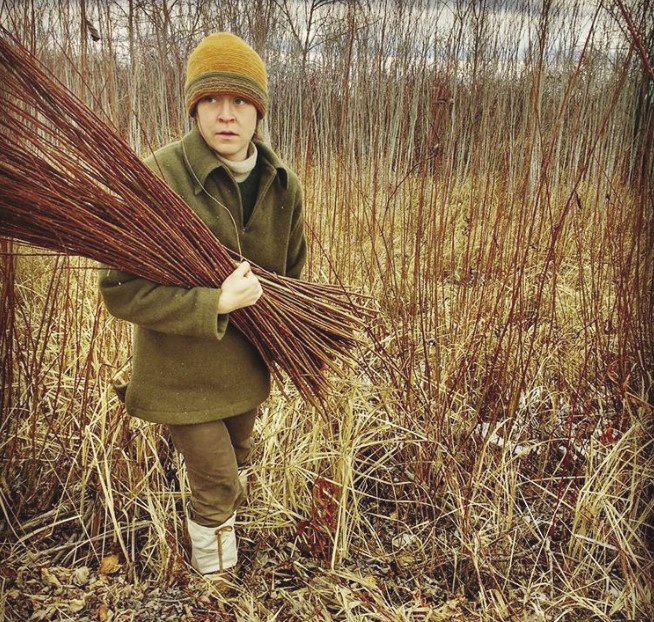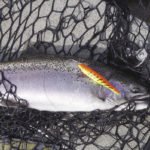As I scurry around in the ditch, carefully organizing piles of sticks, I stop to give a friendly wave as a car slows down to see what’s going on. Occasionally someone will ask “what-cha picking?” or more assumptive questions like “are you picking berries?” “No. Willow,” I responded.
I use willow for weaving baskets. There are many species of wild growing willow in Minnesota. A lot of people immediately think of the weeping willow tree when they hear the word “willow.” The weeping willow is related, but not what I use for making baskets. The stuff I’m talking about grows more like a large shrub, with new growth shoots reaching upwards, not hanging downward like the tree.
It’s often found in low, wetter areas, though it can be nearly anywhere. A few of my favorite spots to look are roadsides and powerline cuts. To harvest, willow can be cut with a pruning shear right down to the ground. The next year it will send up straight branchless shoots, perfect for basketry. The second year of growth it will start to get branchy, which is not desirable for basketmaking. So, I either need to harvest from patches that I have tended and cut back every fall, or find a place where the ditches or power lines were mowed down the year before in order to get the nicest first year shoots.
Some wild willows work great for weaving. Others can be brittle, short and stubby, or their bark can rub off easily. Variety and growing conditions can affect the way plants grow, so I just try things and see how they work. Over time you can get to know an area and learn which wild willows will work well for basketry.
Willow has also been cultivated for basketry for a very long time, and there are numerous varieties that have been developed and used. I grow some basketry willow in my garden and the cultivated varieties certainly have their benefits. Plants are cultivated for a reason—uniformity, color variation, flexibility, etc.
I’ve always liked the idea of going out to collect materials to make something useful, with nothing but a few tools and a little know-how. I tend to keep an eye on the wild willow wherever I am, even when I have access to the cultivated sticks. Late fall is harvest time. At this point, the leaves have fallen to the ground and the surrounding landscape can be quite brown and gray. That makes it especially easy to spot first year willow shoots that are long and straight and good for basketry. They can be shades of lime green, brilliant red, orange and bright yellow.
Sticks are collected and kept with like species, and then sorted and bundled into groups of similar length and thickness. Then they are dried out and can be stored indefinitely until ready for use. When it’s time to weave, the proper sticks are selected and soaked for nearly a week in the water, followed by some time “mellowing” as they are wrapped up in a tarp. The whole soaking process can take two weeks.
How many sticks does it take to make a basket? I’ve heard people say “around 100.” That is likely true, depending on what kind of basket is being made. But it is important to have the right sticks for the project at hand, so it’s always good to collect way more than is needed for a single basket, so that the best sticks can be used for each part of the basket.
Baskets have been made for most of human history all over the world, and practically speaking, making baskets is no longer a real necessity. There is a wide variety of containers that one could find to hold their fish catch, or their freshly picked green beans. But once you start appreciating the work and process of harvesting materials to make something useful, the need for baskets just keeps growing.
Emily Derke is a basket maker in the Artisan Development program at North House Folk School, where traditional craft is taught on the shore of Lake Superior.




